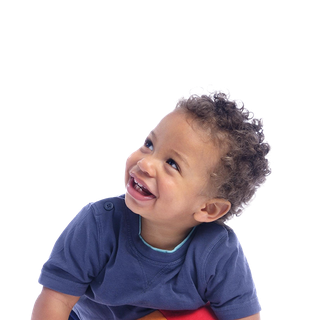10 to 12 months
Your baby should now be enjoying a wide variety of food and textures, and find it easier to pick food up and feed themselves.
Feeding at 10 to 12 months
Your baby should now be used to having 3 meals a day – breakfast, lunch and tea – in addition to their milk feeds.
Lunch and tea can include a main course and a pudding (such as fruit or unsweetened yoghurt). Try to eat together as much as possible, babies learn from watching you eat.
Remember, your baby does not need salt or sugar added to their food or cooking water. Babies should not eat salt as it isn't good for their kidneys and sugar can cause tooth decay.
Food groups
Make sure you include a wide variety of the following food groups in your baby's meals.
Have a look at our baby weaning recipes and YouTube channel for inspiration!
Shop-bought pouches and jars
Although food jars, pouches, trays and pots can be convenient, you should not rely on them as an everyday food. If you use them, only use them occasionally.
Preparing food at home is often healthier and cheaper than shop-bought food. Check out the list of ingredients above for inspiration.
Advice for using jars and pouches
Do
-
Check food labels and choose the food with the least amount of sugar
-
Always squeeze the contents from pouches onto a spoon to feed your baby
Do not
-
Do not rely on food pouches, jars, pots and trays as everyday food
-
Do not let your baby suck food from the pouch – this can increase their risk of tooth decay
-
Do not feed your baby snacks until they are 12 months old
Chunky, lumpy and tasty
Your baby should be enjoying a wide range of tastes and textures, with bigger chunks of soft food and a wider variety of finger foods.
They should be finding it easier to pick up small pieces of food and feed themselves.
Did you know?
Babies under 12 months do not need snacks. If you think your baby is hungry in between meals, offer extra milk feeds instead.
Should I still give my baby breast milk or first infant formula?
Yes. To begin with they will still be getting most of their energy and nutrients from breast milk or first infant formula. Breast milk or first infant formula should be their main drink during the first year. You can continue breastfeeding for as long as you both want.
At this stage of weaning, your baby may be down to about 3 milk feeds a day.
If you're breastfeeding, your baby will adapt their feeds according to how much food they're having. If your baby has first infant formula, they may need around 400ml per day, but just use this as a guide.
Drinks
Your baby should be using their cup with more confidence now, helping themselves to sips of water as and when they need it.
Sweet drinks like squash, fizzy drinks, milkshakes and fruit juice can have lots of sugar so avoid these to help prevent tooth decay – even baby and toddler drinks can be sugary.
Video: Weaning top tips
Hear tips, advice and stories from other parents weaning their babies in this video.

Weaning recipes
Our healthy recipes are great for tiny tums and busy parents!
